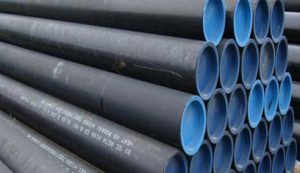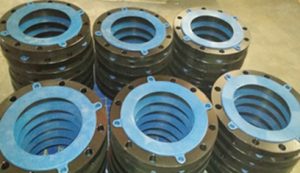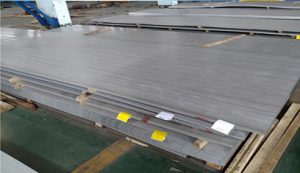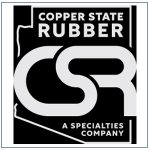
TOTAL DISSOLVEDSULPHIDE IN WATER ANALYSER
H2S, HS
TYPICAL APPLICATIONS
- Amines in water – Water condensates
- Salty water – Geothermal steams
- Other water applications
SPECIAL FEATURES
- In situ or extractive measurement
- Low detection limit
- Short response time
- True T.D.S. measurement
- Direct reading in mg/l or PPM/W
- Long-life sensor
- Interference-free
- Low maintenance
OPERATING PRINCIPLE
The WATERSULF Series analyser is dedicated to the measurement of dissolved sulphides in water up to pH 8.5.
- The concentration of Sulphides in water depends on the sample pH.
- Between 0 and 6 the H2S is at the maximum concentration.
- Between 6 and 8.5 the H2S concentration decreases.
- Between 8.5 and 11 no H2S is present in the water.
- Above 11 S־־ concentration increases.
- Between 4 and 8.5 the HS־ increases.
- Between 8.5 and 11.5 the HS־ is at the maximum concentration.
- Above 11.5 the HS־ concentration decreases.
- At neutral pH (7) only H2S and HS־ are present.
The measurement principle is based on a variation of HENRY’s law :
the weight of any gas dissolved in a definite volume of liquid is proportional to the partial pressure the gas exerts above the liquid at a constant temperature.
The WATERSULF™ analyser incorporates : - an electrochemical sensor for sulphide (H2S)
- a pH sensor (For calculation)
- a temperature sensor (For calculation)
- a pressure sensor (For alarm only)
The sensors are connected to microprocessor electronics, which deliver a true concentration of T.D.S. calculated in relationship with the pH and temperature.
HOW IT WORKS
The H2S sensor is immersed in the water. The sensor is equipped with a propriety membrane. Due to the partial pressure effect, the membrane is only pervious to gases. No liquids, ions or solids can penetrate the sensing part.
The sensor contains a buffer solution with a redox catalyst and 3 electrodes. A defined polarization voltage is applied to the electrodes in order to give a well-defined concentration ratio of the oxidized/reduced redox catalyst. The H2S reacts, first chemically in presence of the redox catalyst to form a reaction product. Then, the electrochemical oxidation of the reaction product takes place at the measuring electrode.
Due to the polarization voltage effect, the system can adjust the concentration ratio. The resulting current is proportional to the dissolved molecular amount of H2S present in the sample.
The pH pressure and temperature sensors are also immersed in the water and deliver signals to the electronic module, which calculates the H2S + HS־. concentration on a real-time basis.
AVAILABLE MODELS
WATERSULF
1000 Panel Mounting, Safe area installation.
WATERSULF
3000 Ex-proof Probe, ATEX certified for hazardous area installation.
Electronic module 19” rack safe area installation.
WATERSULF
4000 Probe and electronic module, Ex-proof ATEX certified for hazardous area installation.
WATERSULF
5000 Portable battery-powered system, safe area installation.
OPTIONS
MODBUS protocol
Calibration system
Remote control via Ethernet
Standing frame
Sampling system
For other options, consult factory
| STANDARD SPECIFICATIONS | |||
| Measuring principle | Henry’s Law. Detection of H2S / Sulphides using an electrochemical cell in relationship with pH and temperature. | ||
| Measuring ranges | 0.01-3 or 0.05-10 or 0.5-50 mg/l (to be stated). Other ranges, consult factory. | ||
| Range unit | Mg/l or PPM by weight (to be stated.) | ||
| Detection limit | 0.01 mg/l approx. | ||
| Response time | Less than 5s full scale (sample system excluded). | ||
| Resolution | 1μg/l (depending on the range.) | ||
| Linearity | ± 2% of the calibration full scale. | ||
| Reproducibility | ± 1% of the calibration full scale. | ||
| Accuracy | ± 2% of the instant value. | ||
| Cross sensitivity | None
for the following components (% vol) : – CO2 max 25.38 – H2 max 0.544 – CH4 max 5.78 – NH3 max 1000 PPM – CO max 92 PPM – CS2 max 5 – Organic solvents max 20 – Acetic acid max 1 mole/l – Salt – HCN Yes for SO2 100 PPM equal 1 PPM H2S. | ||
| PH range | 0 – 8.5 (above on request) | ||
| Temperature | 0 – 30°C (above on request) | ||
| Pressure | 0 – 10 barg (above on request) | ||
| Area classification | General-purpose for WATERSULF™ 1000 and 5000 Ex II 2G / Eexd II CT 6 ATEX certified. For –20°C up to +40°C for WATERSULF™ 3000 and 4000. | ||
| Distance between probe and electronics | 1500m | ||
| RFI protection | I.E.C. 8013 Level 3 | ||
| Sizes / Weights | Depending on the model. Refer to related schematics. | ||
| A – Detection probe module, equipped with 4 sensors | |||
| 1. – H2S / Sulphides | 3. – Pressure | ||
| Principle | Electrochemical (Amperometric) | Principle | Piezoresistive |
| Resolution | Less than ± 0.1% | Measuring range | 0 – 10 barg |
| Response time | Less than 1s | Bursting pressure | 15 barg |
| Accuracy | ± 2% of the instant value | Response time | 150 ms |
| Temperature range | 0 – +30°C | Repeatability | ± 0.1% of full scale |
| Bursting pressure | 10 barg max. | Hysteresis | ± 0.1% of full scale |
| PH range | 0 – 8.5 (above on request) | Accuracy | ± 0.1% on –5° up o +35°C |
| Shaft material | Titanium | Temperature | Yes on given range |
| compensation | |||
| Sensitive tip | Glass | Housing material | Stainless steel |
| Polarization | Built-in electronic board | Sensor life | 24–36 months (depending on the application) |
| Sensor life | 9 – 12 months (depending on the application) | ||
| 2. – pH | 4. – Temperature | ||
| Principle | Single rod electrode | Principle | 4 wire technique platinum resistor (Pt 100) |
| Measuring range | 0- 9 pH | Measuring range | -2 up to +30°C |
| Accuracy | 0.05 pH | Response time | Approx. 1s |
| Response time | Approx. 1s | Repeatability | ± 0.001°C |
| Bursting pressure | 15 barg. | Accuracy | ± 0.01°C |
| Shaft material | Transparent plastic | Bursting pressure | 15 barg. |
| Thread material | Stainless steel or titanium (on request) | Material | Platinum, ceramic, titanium |
| Sensor life | 12–24 months (depending on the application) | Sensor life | 24–36 months (depending on the application) |
| Probe power supply | 15VDC 35mA from the electronic module (galvanically isolated) | ||
| Probe electronics | One PCB including : DC-DC converter – RS 232 driver Micro controller – 4 channel 20 bit ADC Temperature bridge – Pressure amplifier H2S amplifier – pH amplifier One PCB for single-core transmission cable (FSK module) | ||
| Output signal | RS 232 1200 Baud/s galvanically isolated | ||
| Connector | Waterproof. | ||
| Probe diameter | 48 mm | ||
| Length | 440 mm | ||
| Connections | 2 ½” threads or flanges (to be stated) for general purpose in situ probe. ¼” NPT Female for ATEX version with Ex-proof box and sample chamber. | ||
| B – Electronic Module | |||
| Power supply | 85 – 265 VAC 47 / 444 Hz 12VDC for Model WATERSULF™ 5000 | ||
| Display | LCD alphanumeric. H2S/ HS־ /, pH, T, P are displayed | ||
| Keyboard | 16 Keys, TOUCHSENSE™ type | ||
| Process alarm | 1 programmable with a built-in keyboard. Potential free relay contacts 3A 220V in N.O. or N.C. (to be stated). Relay coil normally de-energised or energised (to be stated). | ||
| Fail alarm | 1 potential-free relay contacts 3A 220V in N.O. or N.C. (to be stated). Relay coil normally energised (as Standard) | ||
| Analogue outputs | 4-20 mA self-powered, isolated, 600 ohms max. loop load (4 outputs available). | ||
| Digital output | RS 232 / 485. | ||
| Remote communication | ETHERNET |


















